#CulturalAnthropology
Text
🥥 NICE TO MEET YOUUUU 🥥
You can imagine me sitting on an Indian blanket, not far from the beach, sketching in a notebook for my next paintings. That's basically me, the hippie chick with long hair blowing in the wind and hundreds of necklaces and bracelets tinkling.
My name is Angie, and as you can guess, I love to paint (I'm a painter) and I love to travel immensely! I prefer warm and tropical places where I can walk barefoot in search of shells after sipping a strawberry caipirinha in a decadent wooden bar across the street, but I'm always happy to explore any place in the world. I also enjoy cultural anthropology, marine life, music festivals, horseback riding, yoga and meditation... and pineapple pizza!
I'm here to chat and maybe meet some people interested in making new friends. A big hello!
𓇼 ⋆。˚ 𓆉︎ ⋆。˚ 𓇼 ☮︎ 𓇼 ⋆。˚ 𓆉︎ ⋆。˚ 𓇼 ☮︎ 𓇼 ⋆。˚ 𓆉︎ ⋆。˚ 𓇼
A. K. ॐ

#drawing#Art#Artist#painter#paint#hippie#new#newblog#girl#Personalblog#culturalanthropology#Yoga#Sea#ocean#brazil#pineapplepizza#pizzagirl#princess#wild#artist on tumbr#freedom#Tumblr art
2 notes
·
View notes
Photo

Un anno fa abbiamo portato Orchestrating Spaces in residenza tra le succulente dell'Orto Botanico di Cagliari e l’acqua calda del mare sardo. . Exactly one year ago Orchestrating Spaces was in residency; we immersed ourselves in the succulents of the Cagliari Botanical Garden and the warm salty sea in Sardinia. . #orchestratingspaces #carovanasmi #compagniaatacama #companyblu #magiktriptych #danceresidency #residenzacreativa #danzacontemporanea #identità #antropologiaculturale #dance #culturalanthropology #identity #filipino #american #italiana #sharonestacioperformanceprojects #giovannarovedo #grateful #paesaggidelcorpo2022 (at Cagliari, Italy) https://www.instagram.com/p/CjVt5lqse89/?igshid=NGJjMDIxMWI=
#orchestratingspaces#carovanasmi#compagniaatacama#companyblu#magiktriptych#danceresidency#residenzacreativa#danzacontemporanea#identità#antropologiaculturale#dance#culturalanthropology#identity#filipino#american#italiana#sharonestacioperformanceprojects#giovannarovedo#grateful#paesaggidelcorpo2022
14 notes
·
View notes
Photo

Now available at Nicholas Brooklyn Repost @adikabutler ・・・ Da Homey in Modern Dahomey is part personal memoir, part ethnography, part theoretical social science. This elegant and poignantly written work of literature explores my visit to Benin in January 2019 complete with full color photography by me. It is a rich and highly nuanced contribution to the body of information concerning the Vodun tradition of Benin in West Africa and its cultural relevance to Humanity past, present, and future. There is a particularly unique and inspiring message directed at the descendants of slaves who were shipped across the Atlantic ocean on horrific bruise cruise lines to the Caribbean, North, Central, and South America. In the spirit of cultural anthropologist, Zora Neale Hurston, I spent time speaking with Vodun priests and practitioners in Benin to deliver a message that will be a reference point for further exploration as other writers, researchers, and scientists (hard science and social science) catch up to what is written here in the years ahead. Cover Design: @studioclitandre Image based on canvas painting by @bidexmat #dhimd #culturalanthropology #africanpsychology #africanreligion #benin #dahomey #thewomanking (at Nicholas Brooklyn) https://www.instagram.com/p/ChAQRGaLyWr/?igshid=NGJjMDIxMWI=
8 notes
·
View notes
Text
BA in Anthropology – (Bachelor of Arts in Anthropology)
Bachelor of Arts (BA) in Anthropology is an undergraduate degree program that focuses on the study of human societies, cultures, and their evolution over time. The study of the social, cultural, biological, and archaeological facets of human society is included in this program’s blend of theoretical and applied anthropology.
Several colleges and universities in India and worldwide offer the BA…
View On WordPress
#Anthropology#BAAnthropology#SocialSciences#Humanities#Culture#Archaeology#CulturalAnthropology#Ethnography#History#Sociology#Linguistics#Folklore#VisualAnthropology#GlobalStudies#IndigenousStudies#MuseumStudies#DevelopmentStudies#CulturalHeritage#MedicalAnthropology#BiologicalAnthropology#AppliedAnthropology#Ethnobotany#EnvironmentalAnthropology#GenderStudies#PostcolonialStudies#Colonialism#Decolonization#Multiculturalism#Identity#Intersectionality
0 notes
Photo

A meme- something we all know about now. But in reality this is an anthropological term. Since Memes and bites of information make up so much or the content we consume now a days, it is worth knowing that a Meme was before the internet and to see what that might mean in the context of todays meme. A meme, in Anthropological terms, is what we would call a ‘cultural relic.’ A cultural relic is something that is passed down almost without thinking. Think about the way that we use contractions in English. We are never told when to use don’t and do not. It was something that comes to us almost inherently. Sometimes we use ‘Don’t” and sometimes we use ‘do not’. When we switch them, it sounds weird. But we’re never told this. We just absorb it without realizing it. It is worth thinking about the fact that memes as we know them now, are short, easily digestible, fast bits of information that spread fast and get into your brain easily. How are these being used to slip into our brains in the same way cultural relics have for thousands of years? Food for thought. 🔮🌾🔮🌾🔮🌾🔮🌾🔮 #mantra #mantramonday #memes #anthropology #liguisticanthropology #language #culture #culturalanthropology #meme #learning #words #positivity (at Bucks County, Pennsylvania) https://www.instagram.com/p/CoUzBdAuBR8/?igshid=NGJjMDIxMWI=
#mantra#mantramonday#memes#anthropology#liguisticanthropology#language#culture#culturalanthropology#meme#learning#words#positivity
0 notes
Text
0 notes
Text
INTERPRETATION OF THE FOLK SONG:
Baiga person explaining the song that he was singing-
“The grain of Kodo, Kutki (Ancient grains) is small. We need to enjoy life, singing, playing, and we have to leave this earth one day”
He further added, that earlier there was no use of rice, and we were using Kutki, Kang, Sama, Madia, Bajra, Jodhri. He heard this song from another elder Baiga person when he was young and remembered it.
___
#adialogue #biodiversity #millets #biodiversityresearch #folksongs #folkart #folktale #folkmusic #millet #conservationconversation #natureconservation #conservators #dastangoi #ancientgrains #oralhistory #oraltradition #memory #kodo #kutki #culturalpractice #anthropology #culturalanthropology #incredibleindia #folklore #nature #conservation #cfor36garh
0 notes
Photo
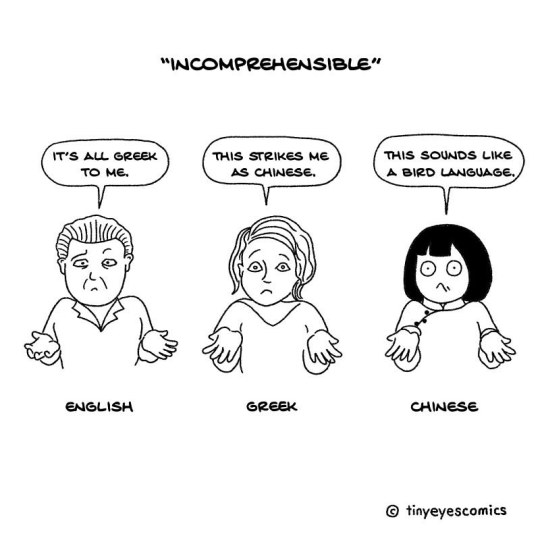
"It's all Greek to me"—This is what an English speaker might say when they find something incomprehensible. I always wonder what language a Greek person would use to describe a similar idea, and it turns out to be Chinese. In Mandarin Chinese, the equivalent is "bird language" (鸟语)or "heavenly script" (天书).
Yesterday I spent lots of time on the Wikipedia article "Greek to me", where similar expressions in different languages are listed. Chinese turned out to be the most targeted language(followed by Greek) as a synonym for "I do not understand" and is used in many languages. Some scholars suggest that it’s because Chinese was considered the "hardest" language, but I’m curious to know why it didn’t produce a mirrored metaphor in Chinese (I imagine Arabic, French and Russian were equally hard for Chinese). Does it have something to do with the time when these expressions originated? Does it have to with popular beliefs in a certain period in history? In today’s world where an increasing amount of people can speak more than one language, many of these expressions have become less relevant. In any case, this is a fascinating topic that leads us to understand different cultural perspectives.
The suggested term for the usage of metaphors described above is "stereotypical incomprehensibility", but I couldn’t find deeper research on the subject. The most interesting discovery is this graph (2nd Image) created by Yuval Pinter based on the Wikipedia article and other referenced sources. It’s originally published on the Language Log at UPENN. You can check out the discussions here: https://languagelog.ldc.upenn.edu/nll/?p=1024
If you are a linguist, this is definitely an interesting subject to further investigate! 🤓 #linguistics #culturalanthropology #itsgreektome #cestduchinoispourmoi #chinesevocabulary #chineseculture #studychinese #learnchinese #languagelover #chinesecharacters #chineseexpressions #chinesewords #学习汉语 #sliceoflife #tinyeyescomics https://www.instagram.com/p/CIVo0fdjQwY/?igshid=gyfordn5d62e
#linguistics#culturalanthropology#itsgreektome#cestduchinoispourmoi#chinesevocabulary#chineseculture#studychinese#learnchinese#languagelover#chinesecharacters#chineseexpressions#chinesewords#学习汉语#sliceoflife#tinyeyescomics
3 notes
·
View notes
Photo



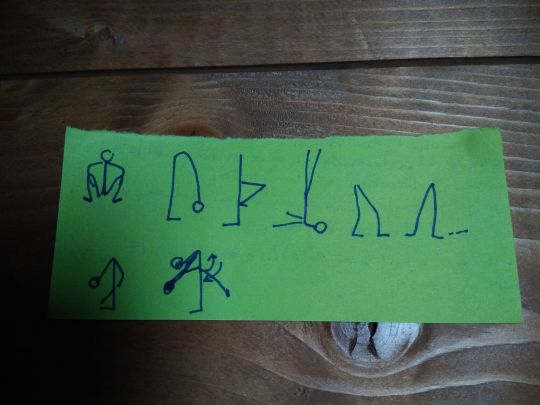
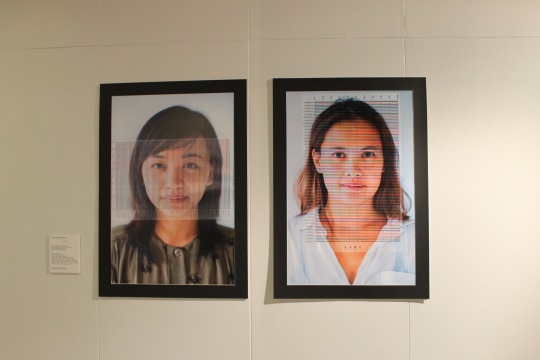


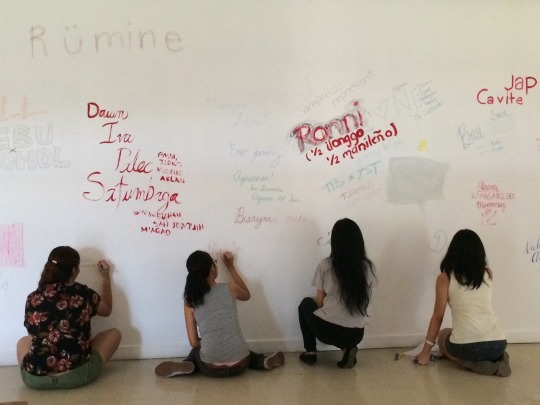


I hadn't always felt a strong desire to fully comprehend how growing up in New York City as a child of first generation Filipino immigrants has shaped my identity. Being essentially American, attempting to fit in socially- as an American, not a Filipino- was a large part of my childhood. In many ways, I lived two separate lives- my Filipino life at home and my American life at school.
Our first visits to the Philippines were filled with stares and whispers of “Balikbayan” (a term used for imported items, adapted to refer to Filipinos born and raised outside of the Philippines) wherever my sister and I would pass. Even our bone structure seemed different. Back home in America, I was relieved to relate to other young Fil-Ams without effort. We were snug in our Filipino shells filled with American-ness.
Fast forward 20 years or so and I am living in Italy. My husband is the son of a Sicilian-Tuscan who met his Filipino wife dancing at a party. Our son is, ethnically speaking, 3⁄4 Filipino and 1⁄4 Italian. Somewhere in there is my being American and my husband feeling very Italian and not very Filipino. Meeting and becoming part of the American-Filipino-Italian community makes me want to dig deeper. The cultural and geographical distillation of generations of people due to immigration/ emigration, globalization, internet and other current realities requires individuals to constantly redefine the parameters of their identity. "The Reconciliation of Magik Salap" - the title of this project - refers to a flavor enhancer used widely in the Philippines called Magic Sarap (a synthetic product (MSG) created to simulate the flavoring properties of broth). Not owning the rights to the product name, we altered the title, as many knock-off products do. "Magik Salap" refers to how I sometimes feel as a Filipino-American currently living in Italy: not quite authentic anywhere.
This experience is the heart of the project, which aims to understand all that is our individual makeup - only from there can we begin to claim our identity.
The Reconciliation of Magik Salap (a Triptych) by Sharon Estacio and Giovanna Rovedo is an ongoing multimedia project launched in 2015 that aims to study and document the mobility and molteplicity of identity at transnational and transcultural levels. The three countries of research are the Philippines, Italy and the United States of America - the country of origin, birthplace and/or country of residence of the two researchers. As dance artists with backgrounds in anthropology and holistic health, we consider the body as agent, observer and soundboard of its context. Engaging our own bodies in this research gives us the opportunity to recognize the continuous evolution of identity related to the geographical and cultural borders in which we live.
We are so happy to share these images of our project with you at the close of Filipino-American History month. Currently, our performative movement research continues as part of Officine&Ideali- Residenze in Transito with the support of MIBAC – SIAE. World conditions permitting, we will premiere a new duet in 2021!
Philippines
Original press release, Phase I
Trailer, Phase I
Italy
Trailer 2019, Phase II
Additional info
#fahm2020#filipinoamericanhistorymonth#magiktriptych#OffIcineIdeali#residenzeintransito#siae#perchicrea#mibact#digitalresidency#danzacontemporanea#medicinaolistica#identità#antropologiaculturale#dance#culturalanthropology#holistichealth#dna#population#genetics#filipino#american#italiana#sharonestacioperformanceprojects#grateful#torino#cagliari#catania
1 note
·
View note
Text
Classes I’m taking:
Advanced Methods of Archaeology
Anthropology of Hunters and Gatherers
Linguistic Anthropology
The Living primates
#anthropology#anthropologist#culturalanthropology#linguisticanthropology#archaeology#biologicalanthropology
1 note
·
View note
Video
youtube
Fieldwork, writing your experience and your loneliness. And some more details about my #kickstarter project!
#kickstarter#kickstarter launch#kickstarter project#culturalanthropology#fieldwork#fieldnotes#fieldworkchronicles#Japan#visit Japan
1 note
·
View note
Photo

aprile 2022, paesaggi friulani giugno 2022, paesaggi toscani luglio 2022, @paesaggidelcorpo . un’ultima settimana di residenza a @lascatoladellarte di Roma prima del debutto . one last residency in Rome at La Scatola dell’Arte before we premiere . #orchestratingspaces #carovanasmi #compagniaatacama #companyblu #magiktriptych #danceresidency #residenzacreativa #danzacontemporanea #identità #antropologiaculturale #dance #culturalanthropology #identity #filipino #american #italiana #sharonestacioperformanceprojects #giovannarovedo #grateful https://www.instagram.com/p/CflhjFSrrEa/?igshid=NGJjMDIxMWI=
#orchestratingspaces#carovanasmi#compagniaatacama#companyblu#magiktriptych#danceresidency#residenzacreativa#danzacontemporanea#identità#antropologiaculturale#dance#culturalanthropology#identity#filipino#american#italiana#sharonestacioperformanceprojects#giovannarovedo#grateful
1 note
·
View note
Text
undefined
youtube
New series in my channel. Check it out!
#anthropology#anthro#eli5#explain like I'm 5#culturalanthropology#social anthropology#physical anthropology#introduction#youtube#youtubechannel#video#educational#educational videos#nerd#nerdlife#book nerd#history#history nerd
33 notes
·
View notes
Text
Mulan Review - NBS
The movies that I have chosen for this Netflix Review Assignment is ‘Mulan’. ‘Mulan’ is a well-known animated musical action activities film produced by Walt Disney Pictures in 1998. In this essay, I will discuss about gender in the movie, ‘Mulan’.
During the Han Dynasty in ancient China, the Huns who are led by Shan Yu breached the Great Wall of China. The Emperor of China orders Chi Fu, the Emperor’s smug councilman to deliver the conscription notices throughout all the provinces, call up reserves and as many new recruits as possible. Fa Mulan is a tomboyish girl who rushed to the town to meet with the village matchmaker to see who she would be a suitable wife for. However, she was told that she will never bring her family honor. After a few days, Chi Fu arrived in Mulan’s village to conscript one man from every family to serve in the Imperial Army. Mulan’s father, Fa Zhou is called forward to receive the order, as he is the only man in the Fa’s family. Mulan is very anxious and worries about it, as her father is already a veteran and one of his legs is injured, but for his country and the honor of his family, he still insists to go to the training camp with the other soldiers. Knowing that her father will not survive in the war, Mulan decides to replace her father to the war. While her family members are asleep, she secretly cut off her long hair to distinguish herself as a man, put on her father’s armor and take his conscript. When her family noticed her departure, they have nothing to be done but prays to the family ancestors for Mulan’s safety. The family ancestors have sent a small dragon, called MuShu to awaken the most powerful guardian, but MuShu accidentally destroys the most powerful guardian. Therefore, MuShu decided to protect Mulan by himself.
Mulan enters the training camp carefully and she follows MuShu’s instruction on how to interact with the other soldiers and how to act like a man. Captain Li Shang, the son of General Li who was ordered by his father to train the new troops while General Li brings his own troops to protect the country. In order not to be suspicious by her recruits, Mulan changed her name to Ping, son of Fa Zhou. Under the command of Captain Shang, she and her recruits Yao, Ling, and Chien-Po have successfully completed their training. To make Mulan a ‘hero’, MuShu creates a fake order from General Li, requiring Captain Shang to bring his troops as backup troops at the mountain pass. The ruse works as Captain Shang bring his troops out from the camp, but when they reached there, they discovered that the General Li and his army have been killed by the Huns. As the troops go forward to the snowy mountains, MuShu accidentally sets off a canon which gives away their position. The Huns immediately came and attack them, and Mulan smartly uses the last canon to cause an avalanche to avoid them from attacking them. Unfortunately, Mulan is injured, and she was sent to receive treatment. Her gender was exposed, and she was ousted to the rest of the troops. Captain Shang is convinced to kill her by Chi Fu, but Shang did not kill her because she has saved them. Mulan was left alone in the mountain and she noticed that the Huns are still alive, she quickly rushed back to the imperial city to warn the troops.
At the imperial city, Captain Shang and his troops are known as the heroes for defeating the Huns. Mulan told Captain Shang and his troops what she saw in the mountain and warned them that the Huns are in the city. However, none of them believes her words and they dismiss her as a liar. Meanwhile, the Huns sneak in the palace and kidnapped the emperor of China. Mulan comes up with an idea and she makes Yao, Ling, and Chien-Po dress up like concubines. While they were distracting the Shan Yu’s men, Captain Shang will save the emperor from getting killed by Shan Yu. Mulan lures Shan Yu to the roof of the palace, and under her instruction, MuShu fires a firework rocket at Shan Yu. As a result, he died and the palace is safe again. Mulan is praised by the Emperor for saving the entire nation of China. She is offered to be the emperor’s council, but she refuses it politely and she expresses her desire to go back home. She was awarded the Emperor’s medallion and Shan Yu’s sword. Mulan returns home and presents the gifts to her father, who is very grateful that her daughter has safely returned home and have brought honor to her family.
One of the reasons why I have chosen this movie is because this is the very first Disney Princess movie to emphasize a more feminist ideology by introducing a heroine instead of a hero. Mulan is a very well-known character in every Chinese family and every child would have watched this movie before. In the Chinese culture, men are held in a higher social position than women, a trend shown in the movie. As a girl who grew up in a Chinese family, I have noticed that the older generations of Chinese like my grandparents are more biased towards their sons and their grandsons. Besides that, the Chinese girls are encouraged to conform to the social expectation in the Chinese culture which is to be graceful, refined and polite. Thus, while watching this movie, it is easier for me to relate myself more to it. Moreover, as a female, I feel grateful to see that the evolution of Chinese culture has made women more equal to men.
Gender is composed of the expectation of thought and behavior that each culture assigns to people of different sexes (Kenneth, 2017). We are taught at a very young age that there is a difference between masculinity and femininity. Boys are usually dressed in blue and girls are usually dressed in pink. As they grow older, girls are told to learn how to cook and do the house chores instead of playing sports. In addition, education for women back in Han times is very limited, as ancient China think that it was a waste of time because women’s opinion did not matter. The aim of traditional women’s education was limited to the teaching of social ethics and family traditions with an emphasis on how to become a virtuous wife and good mother (Wong, 1995).
In ‘Mulan’ (1998), we can see how Mulan breaks the gender ideologies by defying the public and private spheres typically associated with gender segregation. Gender ideologies is a set of cultural ideas, usually stereotypical, about the essential character of different genders that functions to promote and justify gender stratification (Kenneth, 2017). According to Michelle Rosaldo, women are constrained by their role in reproduction, were confined to the private, or domestic, sphere – including the home, family, and childbearing. Men tended to dominate the public sphere – politics, economic exchange, and religious ritual (as cited in Kenneth, 2017). However, in this movie, Mulan broke the gender ideologies that women should only stay at home because she replaces her father to go fight in the war and prove that women can be tough, can endure the pain and sacrifice in the war like a man. Moreover, Mulan also breaks the ancient Chinese culture state that women are not allowed to participate in the politic. Women in ancient China did not enjoy the status, either social or political, afforded to men. (Cartwright, 2017)
Besides that, this movie has also altered the typical ‘hero’ stereotype. In most Disney movies, men are always the ‘hero’ while women are always being portrayed as weak and need to be protected by the men. However, in this movie, Mulan is the ‘hero’ of the entire nation of China. Other than that, this movie has also shown us the status of a woman back in that time. When her gender was exposed, she was ousted to the rest of the troops and no one trusted her when she told them the Huns are in the city. They are deaf to her words and dismiss her as a liar. At the beginning of the movie, Mulan meets with the village matchmaker to see who she would be a suitable wife for, but she was told that she will never bring honor to her family. To bring honor to her family as a girl, she must be a wife who was calm, obedient and has a tiny waist. A woman’s virtue was a particularly valued attribute in Chinese society (Cartwright, 2017).
In short, ‘Mulan’ has taught the audience, including me, to be brave and stand up for who they are. Additionally, Mulan has changed the perspective of the ideas and behavior of what women should do, because they are more than what people think of women. Women are as capable as men. As a woman, I truly encourage women to be who they want to be and do not be afraid of what people think about them.
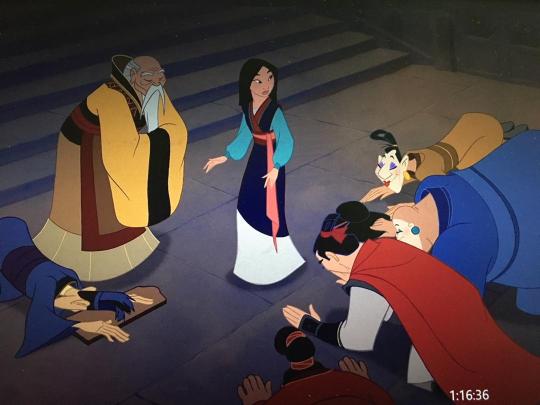
My favorite scene in this movie is shown in image 1 attached below. This is the scene when the emperor of China bows to her as do the countless people in the attending crowd after she has saved the entire nation of China. This has expressed the greatest respect for women and women can break the gender ideologies and gender stereotype. This movie has proved that men are no longer the only ones capable of war and women should not conform to the gender ideologies and they should stand up for who they are. Besides that, I think the movie that I chose is a good addition to this course in the future because I have learned a lot of things related to gender while doing this Netflix review assignment.
1 note
·
View note
Photo
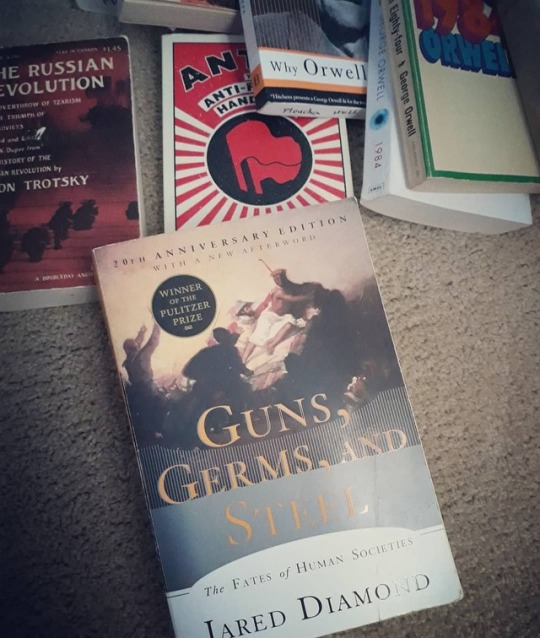
A Jared Diamond day #culturalanthropology #jareddiamond https://www.instagram.com/p/Bo6xc2ADc_i/?utm_source=ig_tumblr_share&igshid=1degk5bo5kqb2
2 notes
·
View notes
Photo
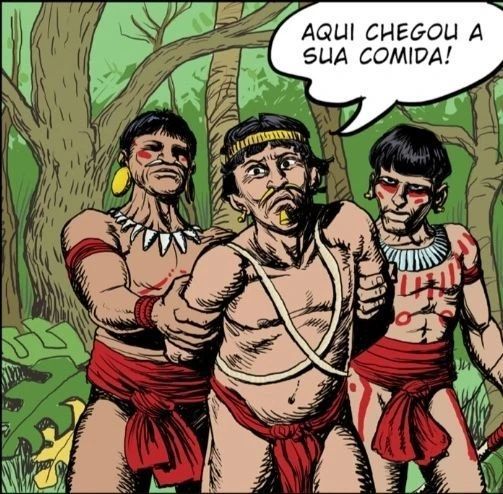
Algumas referências sobre a antropofagia e a guerra ritual tupinambá do século XVI, registrada pela documentação histórica da época pelos primeiros cronistas, com destaque os relatos de Hans Staden, que foram estudadas por diversos pesquisadores da área de Etnologia/Antropologia. "A relação entre grupos locais que não estavam ligados entre si por laços de parentesco eram relações de hostilidade. A documentação disponível põe em evidência que os aborígenes, inclusive os tupinambá, viviam em estado de guerra crônico." 58 "Os tupinambá praticavam a antropofagia sob a forma ritual (...), de modo que a ingestão de carne dos inimigos sacrificados possuía um significado simbólico e mágico." 63 " (...) de fato, a vingança constituia o principal fator de guerra na sociedade tupinambá" 69 🔸FERNANDES, Florestan. A função social da guerra na sociedade tupinambá. Ed. Globo, São Paulo, 2006. Quem tiver interesse na sociedade tupinambá do século XVI, também há as obras de Alfred Metraux e Hans Staden, com referências abaixo: 🔸METRAUX, Alfred. A religião dos tupinambás e suas relações com as demais tribos tupi-guarani. Edusp. 1979. 🔸STADEN, Hans. Duas viagens ao Brasil. primeiros registros sobre o Brasil. L&PM, Porto Alegre, 2009. 🔸THEVET, André. A cosmografia universal de André Thevet, cosmógrafo do Rei. Rio de Janeiro, Fundação Darcy Ribeiro, 2009. #antropologia #antropologiasocial #antropologiacultural #etnologia #sociologia #cienciassociais #historiadobrasil #historiaindigena #anthropology #ethnology #socialanthropology #culturalanthropology #sociology #socialscience #socialsciences #history #culturalhistory #socialhistory Reposted from @anthropologicalblues https://www.instagram.com/p/CYzzlxorYHm/?utm_medium=tumblr
#antropologia#antropologiasocial#antropologiacultural#etnologia#sociologia#cienciassociais#historiadobrasil#historiaindigena#anthropology#ethnology#socialanthropology#culturalanthropology#sociology#socialscience#socialsciences#history#culturalhistory#socialhistory
0 notes